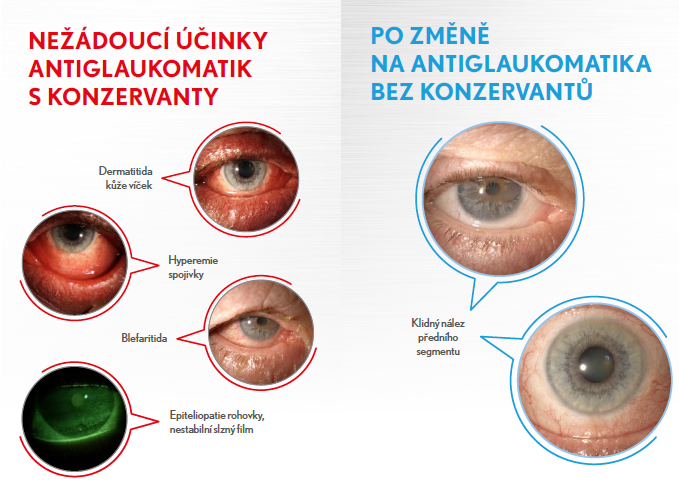Efficacy and Safety of Preservative-Free Latanoprost in the Treatment of Open-Angle Glaucoma and Elevated Intraocular Pressure – Results of a Meta-Analysis
Many eye drops for the treatment of glaucoma still contain preservatives today. However, these can cause eye irritation, so non-preservative formulations should be preferred. The following meta-analysis compared the efficacy and safety of antiglaucoma medications with and without preservatives.
Introduction
For the treatment of glaucoma and elevated intraocular pressure (IOP), substances that affect the outflow of intraocular fluid are used, among others. These include prostaglandin analogs such as latanoprost, bimatoprost, travoprost, and tafluprost. However, eye drops often contain preservatives, the most commonly used being benzalkonium chloride. These can cause eye irritation and adverse reactions such as conjunctival hyperemia, eyelid dermatitis, blepharitis, uveitis, corneal epithelopathy, and tear film instability. Therefore, current recommendations suggest switching to preservative-free antiglaucomatous medications to avoid eye irritation. But are these preparations equally effective in reducing intraocular pressure?
Fig. 1 Adverse effects of antiglaucomatous medications with preservatives vs. after switching to preservative-free medications (source: Bausch Health)

Analyzed Studies
A total of 21 randomized controlled trials available until December 2011 in the Medline, Embase, and Cochrane databases were included in the meta-analysis. These studies evaluated the efficacy and safety of prostaglandin analog treatment in patients with open-angle glaucoma and elevated intraocular pressure. The primary parameters monitored were the value of intraocular pressure after 3 months of treatment and the occurrence of conjunctival hyperemia as an adverse reaction.
Results
After 3 months of treatment, no statistically significant differences were observed in intraocular pressure values between patients using preservative-free latanoprost, travoprost with preservatives (benzalkonium chloride, polyquaternium 1, or sofzia), and other prostaglandin analogs containing benzalkonium chloride: bimatoprost 0.03%, bimatoprost 0.01%, and latanoprost. Patients using preservative-free latanoprost had lower intraocular pressure compared to patients treated with tafluprost containing benzalkonium chloride (mean IOP difference 0.47 mmHg, 95% confidence interval [CI] –1.52 to –0.28). Conjunctival hyperemia was less frequently reported in patients using preservative-free latanoprost.
Conclusion
No study demonstrated that preservative-free latanoprost is less effective in the treatment of open-angle glaucoma. On the contrary, compared to tafluprost containing benzalkonium chloride, a greater reduction in intraocular pressure was observed. The risk of conjunctival hyperemia was also significantly lower.
Thus, when switching compensated patients to preservative-free treatment, there is no need to worry. This therapy is equally effective and additionally reduces the risk of eye irritation. This fact should help increase adherence in patients who do not comply with treatment precisely because of local adverse reactions.
(mafi)
Source: Cucherat M., Stalmans I., Rouland J.-F. Relative efficacy and safety of preservative-free latanoprost (T2345) for the treatment of open-angle glaucoma and ocular hypertension: an adjusted indirect comparison meta-analysis of randomized clinical trials. J Glaucoma 2014; 23 (1): 69–75, doi: 10.1097/IJG.0b013e3182a075e6.
Did you like this article? Would you like to comment on it? Write to us. We are interested in your opinion. We will not publish it, but we will gladly answer you.
